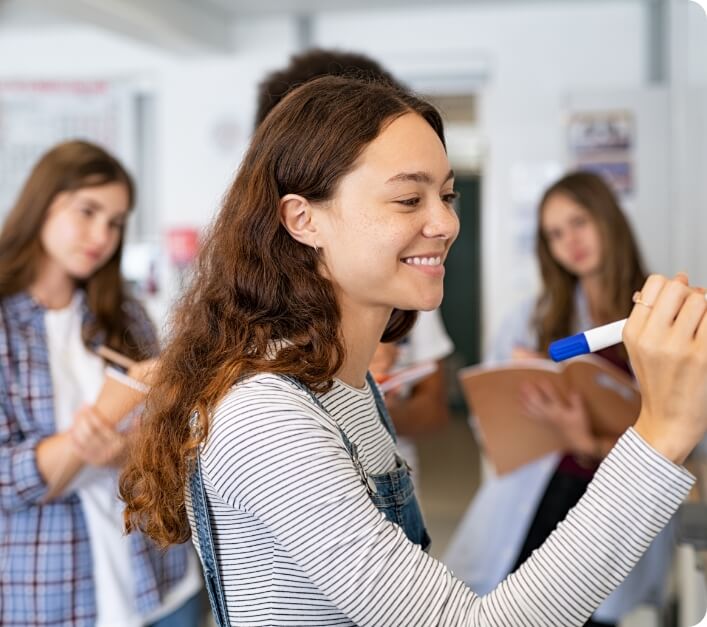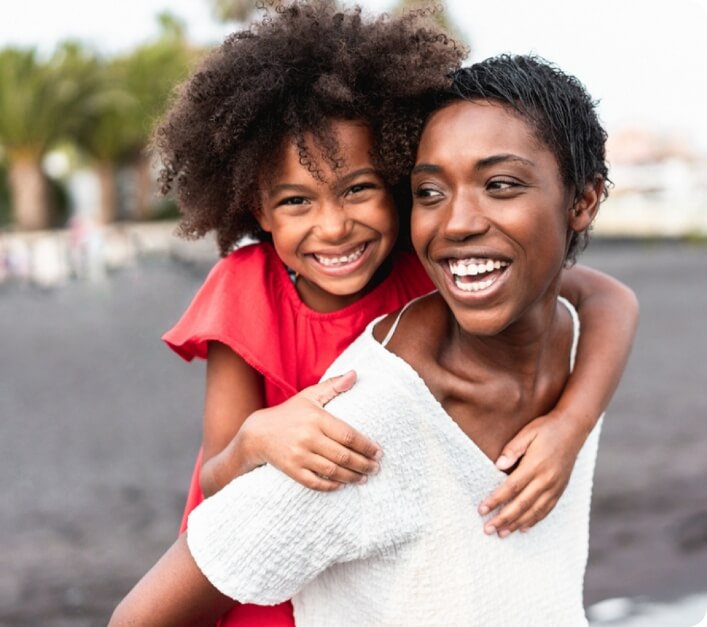Watch Lawrence and Diego’s full story.
Even in the incredible world of fostering, a story like this comes along rarely, if ever. However, married couple Lawrence and Diego from Madera, California, set a new bar when they decided to give seven full siblings a permanent home together after years of being separated in different foster homes.
“At one point, we thought of the possibility of surrogacy and then we just felt like why bring more lives into the world when there’s so many that need the guidance and the love? But we only wanted two. Two was it.”
Diego is a music teacher with foster students in his classes, and Lawrence is a school nurse at a local high school, which has a high foster youth population.
Several months passed after they applied to become resource parents before they heard anything. Then, Pacific Clinics reached out to let them know that they had a sibling group of seven.
Nobody could take them, even after a statewide and out-of-state search.
“So, they asked us, ‘Would you guys be willing to take three instead of two?’ We talked about it and thought, well, what’s one more?”
The couple took the three boys and, over the course of the first year, got together with their four sisters, who were in a foster home in Merced, about once a month.
Then, the couple heard through the boys that the girls wanted the life their brothers were living. “Here, the boys are living this amazing life, traveling all over and having their own bedrooms. We just felt bad.”
“We made the decision to reunite all seven and said we would figure it out from there. Now, we’re a year with the girls and almost two years with the boys.”
“When the sisters found out, they were like, ‘We will pack our stuff tonight. We want to go now.’ And within two weeks they had moved in with us.”
How Do They Do It?
It’s the question everyone is asking: how do these two manage a household of seven kids, whose ages are: 14, 12, 11, 10, 9, 8 and 3 ½?
Lawrence, who is also pursuing his school nursing credential, says, “Well, you know, we are running a little thin, but we are managing. And the kids are great. We get it done.”
“It helps tremendously that we both work full time at schools and that our schedules almost mimic theirs.”
“The hardest part is just keeping them all accountable. It’s a constant conversation: it’s just two of us versus seven of you. All we ask is that they clean up after themselves and keep up their grades.”
“For me,” says Diego, “the hardest thing has been the older girls. One of the reasons we took the three boys originally is because it was kind of like, well, we’re both guys and we know boys.”
“Let’s be real,” says Lawrence. “There’s no mom in the house. They have two dads, so we just try to be supportive and be there, you know, because they lack that.”
However, not entirely.
Diego’s sister and the couples’ moms play an important role – and perhaps surprising to some – so does the girls’ bio mom. The couple makes it a priority to see and communicate with mom (and dad) every other month, and for birthdays and holidays.
It also helps that Lawrence and Diego’s families are on board, “super involved” and live close by.
“They help out a lot, and they adore Diego’s sister. She is the favorite aunt because she spoils them. Our families have totally welcomed this sibling group as their own.”
Oh, the Places They Will Go (and Have Gone)
The couple says it’s important to them to give them new experiences they haven’t had before.
Before Madera, none of the siblings had been on a plane, seen the beach, the mountains, sand or snow. They had definitely never been to Disneyland.
That has all been remedied.
When the girls saw the beach, “They were ecstatic. Well, at least for the first two days, and then they learned quickly about sand.”

Next on the itinerary is trying to send the oldest three girls on a seven-day trip to New York, Philadelphia and Washington, DC, to learn about America’s history and the Big Apple. The trip is through the girls’ school district. “We’re doing everything we can to make the trip possible, though financially, it’s been challenging.”
For all of the kids – and the couple – it has been a “whole new world.”
“Even with the first three,” says Diego, “it was a shock mentally and physically becoming parents overnight. I was in there at night checking just to make sure they were breathing. But it definitely has gotten easier – and more fun.”
The most rewarding aspect has been just seeing the growth. Many of the kids struggled with reading, grades and vocabulary. But, within a year of living with their new parents, they have done a 180. “They are like whole new kids,” says Lawrence. “They’re absolutely killing it.”
When asked what advice or insight they had for potential future parents, Lawrence says, “I think a lot of people are just afraid because it’s the unknown. You don’t know what you’re going to get. One of our kids has a couple of issues, and that does require a bit of extra work, but at the end of the day, even with all seven, it all becomes normal very fast.”
The six oldest kids are all involved in sports or play at least one or more musical instruments. During the interview, Lawrence turns their computer camera to one of their boys and asks if he will play for an audience.
The 10-year-old looks at the camera—a bit shy but willing to accommodate his dad’s request—and shows off his nearly unbelievable ability for only a year of training.
“It’s just crazy how, in such a short amount of time, you can just see the kids totally blossom. I feel like we would be missing such a large part of our life if we didn’t have them now.”
At the time of publishing, the boys are going through the adoption process, and the girls are slated for the same, not far behind.
“You see all the kids’ successes and being happy and healthy. It is all worth it. If they weren’t here, we would be totally lost.”
Learn more on how to become a resource parent through Pacific Clinics.








